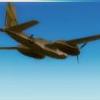
Sign in to follow this
Followers
0

Why do some simmers use the autopilot for every phase of flight?
By
z06z33, in Hangar Chat


By
z06z33, in Hangar Chat